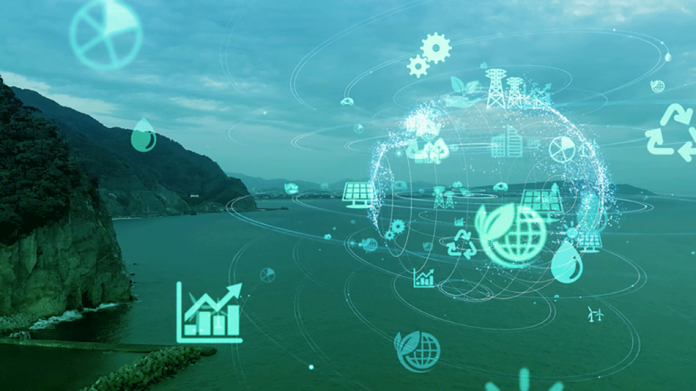By Lindsey Walker
Water management is a complex undertaking with diverse and often competing demands. However, the advent of digital tools has emerged as a formidable ally in enhancing the way we manage our precious water resources. These tools facilitate data collection, help with decision-making processes, and enable better monitoring and management of water resources. In this article, we will explore the myriad ways in which digital tools are revolutionizing water management and the numerous benefits they bring.
Smart Water Metering with Intelligent Technology
The implementation of smart metering infrastructure has ushered in a new era of efficient and rapid data collection for utility companies. Forecasts by IHS Markit predict that approximately 50 million smart water meters will be shipped globally in 2023, a staggering four-fold increase from the previous projections made in 2017.
Leading the charge, industry pioneers are assisting water utilities in becoming more agile, streamlined, and resourceful by replacing outdated and labor-intensive processes with smart metering systems. According to ABI Research, solutions utilizing non-cellular low-power wide-area networking technologies are expected to account for 20% of all smart meters deployed by 2026. The following highlights the key drivers and benefits of such deployments:
- Remote Metering: Wireless measurement of usage data in dense urban environments, indoors, and underground eliminates the need for manual meter reading and reduces errors.
- Leak Detection: Real-time monitoring of water pressure and flow through piping networks helps you to identify faulty points and leaks promptly.
- Data-Driven Decision Making: Utility management software utilizes massive amounts of data to identify areas of excessive consumption, implement water-saving measures, and drive sustainability efforts. Access to and analysis of such information enables actionable insights and intelligent decision-making for utility operators and end-users alike.
Water Quality Monitoring
Water quality monitoring is of paramount importance in assessing the health of our seas, rivers, and ports. It enables us to track changes, analyze trends, and develop plans and strategies to improve water quality and ensure its designated use. Let’s delve deeper into the purposes of water quality monitoring:
- Identifying Specific Pollutants: Water pollution stems from various sources, such as sewage, agricultural practices, oil pollution, and industrial activities. Regular water quality monitoring provides essential data to identify immediate issues and pinpoint their sources.
- Environmental Planning: Collecting, interpreting, and utilizing data is vital for developing effective water quality strategies. Real-time data is crucial for pollution control measures. Digital systems and programs facilitate data collection and management, enabling sound strategies to be developed.
Internet of Things (IoT) Systems
The Internet of Things is revolutionizing the water industry by providing innovative solutions for efficient resource management. With water scarcity becoming a pressing concern, IoT proposes unique and advanced techniques to meet the demands effectively. Through the use of sensors, real-time observations, data-driven approaches, and user-friendly interfaces, the water industry benefits in numerous ways. Here are some advantages of implementing a smart water management system:
- Real-Time Analysis of Water Consumption: IoT-based systems equipped with quality sensors capture accurate information in real-time, allowing users to identify water consumption patterns and promote judicious water use.
- Predicting Potential Failures: By monitoring the entire water system through IoT technology, water utilities can anticipate pipe breaks or line bursts, enabling timely and cost-effective interventions. This consolidated view of the water sector facilitates informed decision-making.
- Dynamic Reports: IoT systems generate interactive reports that provide authorities with valuable insights during business meetings. The data shared by advanced sensors is converted into user-friendly formats, allowing for fact-based analysis and informed decision-making.
Cloud-Based Data Management
Adopting cloud-based water utility asset management software solutions offers several productivity benefits, including:
- Reduction of Manual Tasks: Cloud-based software eliminates time-consuming manual tasks such as data entry, filing, and client follow-ups. It streamlines processes and empowers users with easy-to-use interfaces.
- Extending the Lifespan of Infrastructure Assets: Real-time updates and access to data in the field facilitate more comprehensive asset maintenance. Cloud-based systems allow for seamless data capture, increasing the lifespan of aging infrastructure assets.
- Streamlining Chain-of-Custody Processes: Cloud-based systems simplify chain-of-custody management, eliminating the challenges of manual, paper-based systems. Field updates ensure accurate tracking of names, steps, and processes, enhancing overall efficiency.
Final Thoughts
Digital tools have transformed water management practices across various domains. From smart water metering and water quality monitoring to IoT systems and cloud-based data management, these technologies enhance efficiency, enable data-driven decision-making, and contribute to sustainable water resource management. Embracing digitalization in water management is essential for ensuring the effective and responsible use of this precious resource in the face of growing challenges.
About the Author
Lindsey Walker is the marketing manager for NEXGEN, a Sacramento-based industry leader in designing advanced computerized maintenance management systems and asset management software tools for utilities, facilities, public works, manufacturing, and fleet industries. In her free time, Lindsey enjoys travelling and reading, which allows her to gain new perspectives and inspiration for her work. She is committed to creating content that connects well with her readers, enhancing their digital experiences.


































